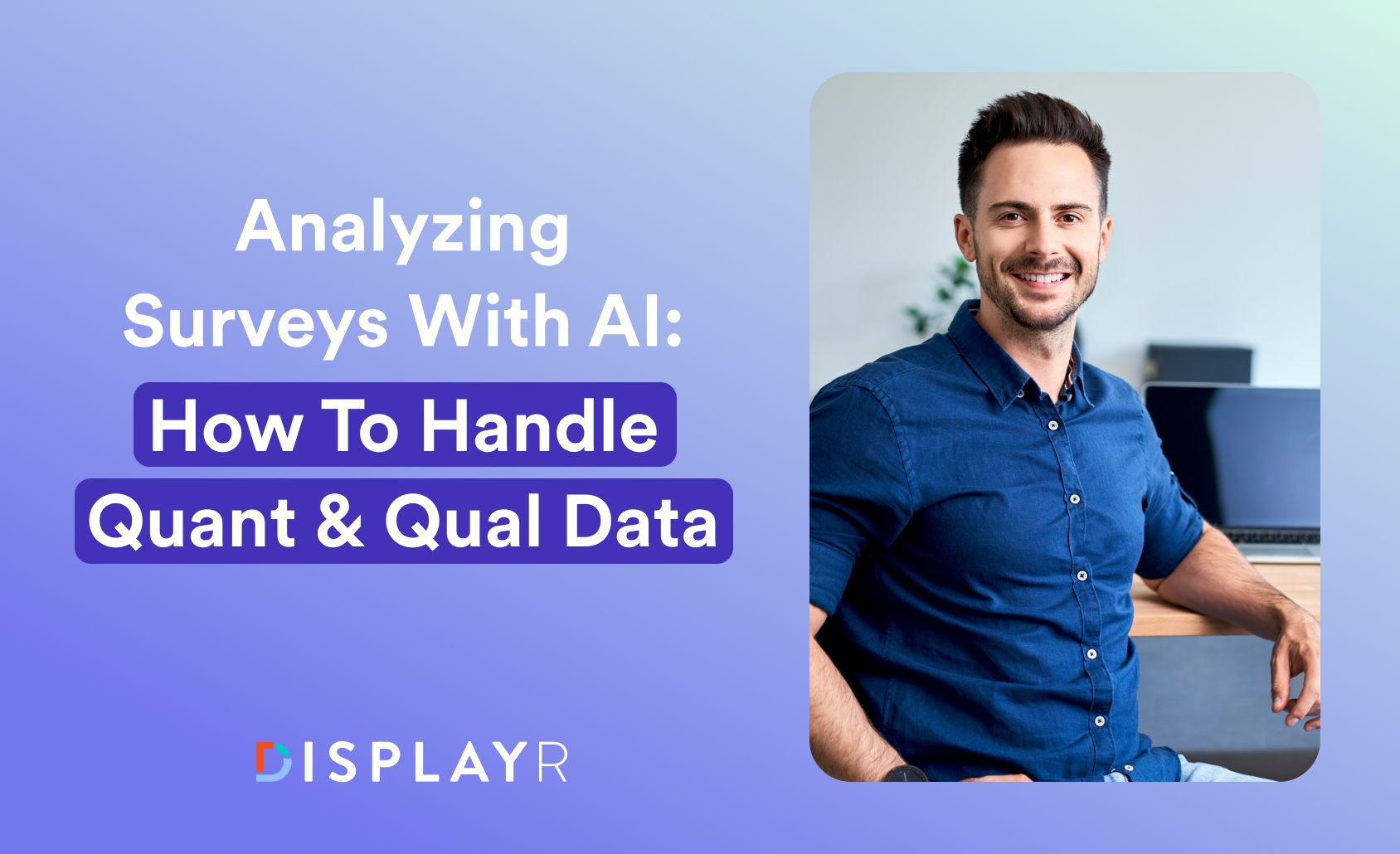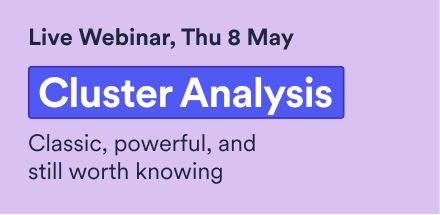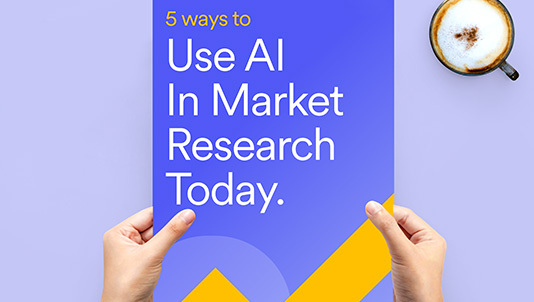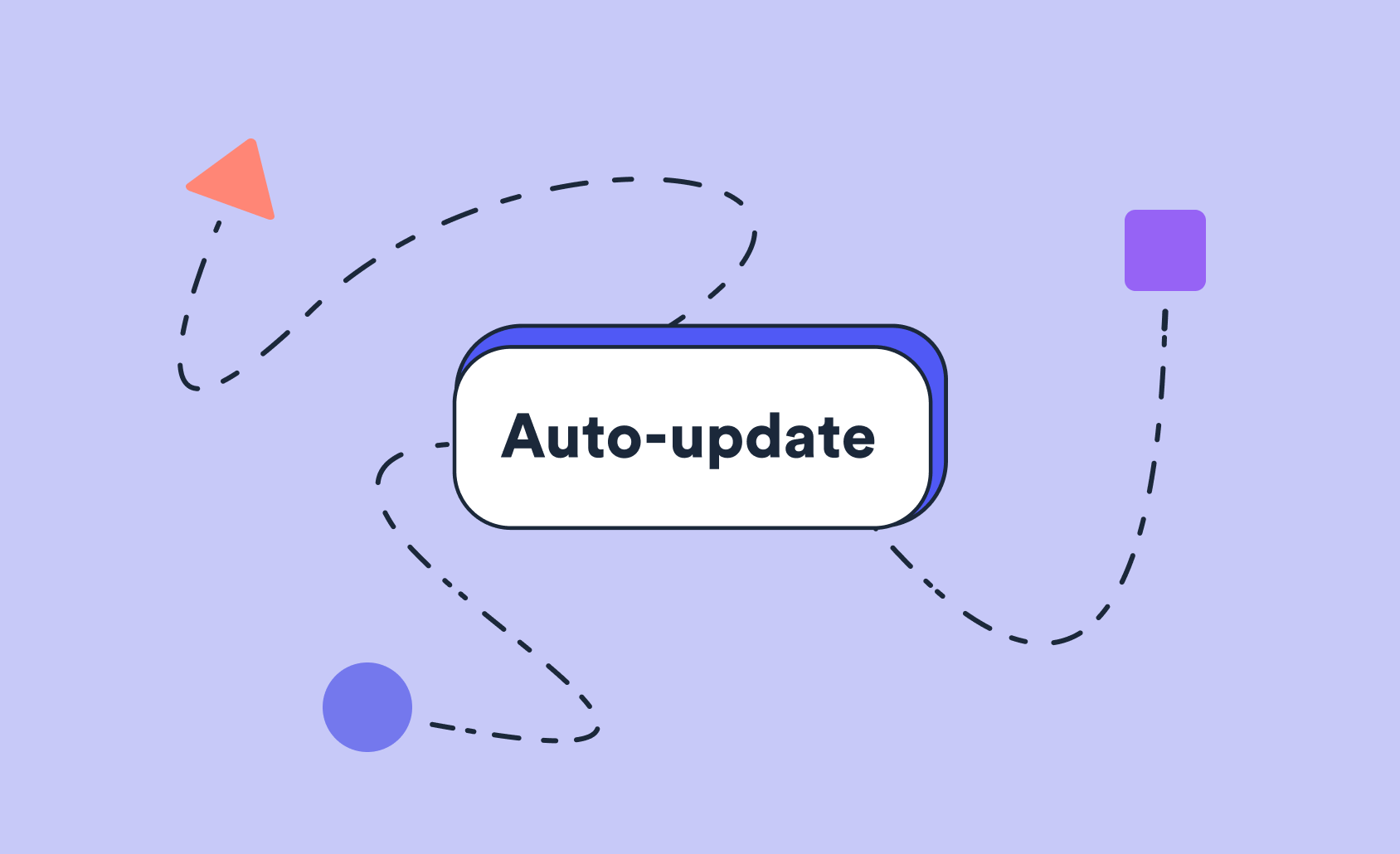
AI Survey Analysis | How To Handle Quant & Qual Data

TL;DR
Survey analysis is evolving fast. While traditional methods involved time-consuming manual work, AI is now transforming how we process both qualitative and quantitative data. Researchers can now streamline open-ended response analysis, categorize themes automatically, clean messy data, and run statistical tests in a few clicks—boosting speed and accuracy. By blending the ‘what’ of quantitative data with the ‘why’ of qualitative feedback, AI-powered tools like Displayr are enabling researchers to deliver deeper, faster insights than ever before.
Moving Past Manual Survey Analysis
So, you've just gotten back the results of your survey - now what?
Analyzing survey data is one of, if not the most critical, aspects of market research. It's how we answer important questions, identify emerging trends, and create actionable insights that drive business results.
For a long time, analyzing survey data has been a largely manual process - defined by tedious data cleaning, coding open-ended responses, and slowly building crosstabs.
Of course, market research-specific tools - such as Displayr and Q Research - have made it easier for researchers to automate and accelerate much of the survey analysis process, particularly around things like stat testing and weighting.
However, the latest wave of technological innovation for survey analysis has no doubt been around AI.
What is AI Survey Analysis?
AI survey analysis is an emerging market research technique. By leveraging the power and scale of AI, researchers can process more survey data while improving the accuracy of the analysis.
As AI is still a rapidly evolving field, the ways in which survey data can be analyzed continue to expand. What we are seeing so far is that AI can be used to automate text analysis, detect patterns in large datasets, interpret results, and generate predictive insights. By fast-tracking tasks that were once time and resource-demanding, AI is freeing up researchers to spend more time on the in-depth analysis that clients seek out.
When looking at data that requires analysis after a survey is complete, it can usually be classified as qualitative or quantitative.
Analyzing Qualitative Data with AI
Analyzing qualitative data has emerged as one of the most immediate and effective wins for AI in market research so far. The most recent AI boon has been led by the rise of generative AI tools, such as OpenAI's ChatGPT and Google's Gemini. These AI tools are powered by cutting-edge natural language processing (NLP) technology. NLP - as the name suggests - uses machine learning to actually understand the human language.
Much like how we've seen ChatGPT excel at writing AI-generated content, this same technology is now used to read and interpret open-ended survey responses and then automatically categorize the answers into common themes. This has created a new wave of AI text analytics tools, designed to streamline the process of extracting insights from open-ended responses and effortlessly synthesize this data into tables, dashboards, and visualizations.
Analyzing Quantitative Data with AI
While qualitative data gets to the 'why' in market research, quantitative is all about the 'what' and the 'how much'. It provides measurable insights that can be statistically analyzed, helping researchers identify trends, correlations, and patterns in large datasets. In terms of using AI to better analyze quantitative data, there is a host of different applications of AI that have proven effective, depending largely on the specific use case. Some common examples include;
- Cleaning data: When we talk about tedious survey analysis tasks, data cleaning is right up there. AI is showing its value as a way to quickly tidy up datasets. It can automatically detect and correct errors, remove duplicate responses, identify outliers, handle missing data, and flag inconsistencies—saving time and improving overall results.
- Interpreting results: As mentioned in the qualitative data section above, AI is great at quickly reading, understanding, and then summarizing the results of open-ended questions. And this same process can be applied to quantitative data as well. By providing a detailed prompt that instructs the AI to interpret and summarize the tables and calculations in a report, researchers can save time that would have otherwise been spent intepreting the data manually.
- Statistical significance testing: When dealing with quantiative data, it's important to understand whether or not the results can be explained solely by chance. This is where statistical significance comes in. There are a host of different statistical tests researchers rely on to better understand the significance of their data. These tests are often complex and time-consuming. With AI, however, you can automate these tests to quickly and accurately assess the significance of your results.
How AI is Combining Quant & Qual
AI has been a game-changer in terms of the scalability of qualitative research. You can now collect, analyze, and generate insights from open-ended responses in hours rather than days. In particular, qualitative techniques such as thematic coding and sentiment analysis can be used to collect numeric data. This is what is sometimes referred to as the 'quantification of qual'.
By quantifying qualitative data, you are effectively getting the best of both worlds. You can get to the 'why' behind respondents' answers while still collecting the objective insights that are needed to inform effective decision-making. This approach allows researchers to integrate rich, open-ended feedback into structured analysis, making it easier to identify patterns, measure sentiment, and track trends over time.
There's also a growing application of qualifying quantitative data. AI-powered survey analysis tools, such as Displayr, now allow users to ask AI to help summarize and interpret results. With the right prompt, AI can quickly tell you exactly what is going on in your data, freeing up time and resources for deeper analysis.
See AI survey analysis in action. Try Displayr for free and experience faster, smarter insights today.




